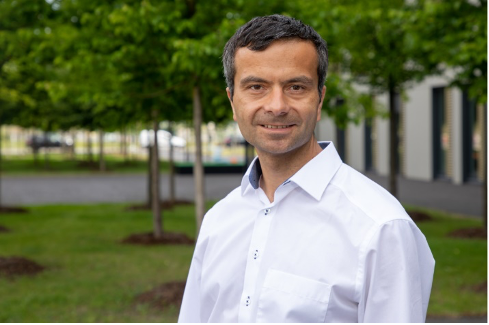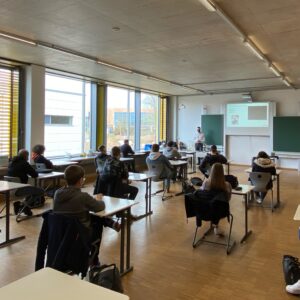Every year, Attert-Lycée Redange hosts the Journée de l’Orientation, an annual event to help their students determine their potential career paths and choose a future area of study. Last Friday, Dr. Jan Thoemel, a Research Scientist at SnT presented his experience as an engineer and scientist to the students.
Held on Friday 12th March, Dr. Thoemel highlighted the typical day-to-day activities in his profession, including computations, experiments, management and outreach. The students were interested to learn about his work with SnT’s CubeSat prototype and satellites. “I gave some insight into space engineering and emphasised that astronauts need to have a Master’s degree,” said Dr. Thoemel.
He also touched on the fact that the next astronaut to land on the moon will be female, an aim that NASA has been sharing since their intention for a 2024 moon landing was announced.
With over 80 students in attendance across three sessions throughout the day, the topic proved very popular.
“It’s important for the younger generation to understand that the progress and innovation in technology is important for the development of countries like Luxembourg. It’s also a very exciting field to work in.
This is not the only initiative out there aiming to inspire the next generation of scientists. Researchers at SnT have recently been participating in the “Chercheurs à l’école”, a programme developed by the Fonds National de Recherche of Luxembourg (FNR).

Dr. Jan ThoemelInterdisciplinary Space Master is a Research Scientist, head of the CubeSat Laboratory at SnT and a lecturer at the . He received his Ph.D. in 2008 at RWTH Aachen University in Germany and the von Karman Institute in Belgium, where he researched the physics of gas surface interaction. Dr. Thoemel previously worked in the space sector, including for the European Space Agency, the Royal Institute for Space Aeronomy, GomSpace and the von Karman Institute. In his current research, he is investigating how aerodynamic and solar radiation forces can be used for orbital control to serve highly efficient remote sensing missions.
